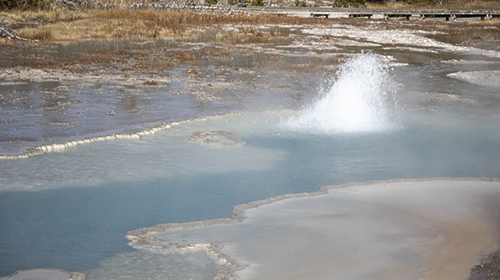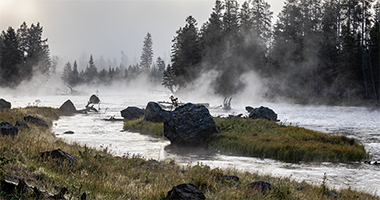Do Geysers Stop or Start Erupting?

Geysers can become active or go dormant at any time. Some geysers have very irregular intervals. For example, Ear Spring erupted on September 15, 2018, after last erupting on January 28, 1957. Ear Spring interval was 61 years, 245 days, 15 hours, and 49 minutes. Many people did not know the Ear Spring was a geyser because of its very long interval and its name as a spring.
Anything that impacts the ingredients that make a geyser erupt can stop or start eruptions. Water must be hot for eruptions to occur. Anything that decreases or increases the underground temperature can be a cause. Any sudden change in water flow levels can impact a geyser's ability to erupt.
Yellowstone National Park has 1000-3000 earthquakes each year. Most are below our ability as humans to feel. But they are capable of physically opening or closing a geyser plumbing system. They can also change how or if the water flows to a geyser or system.
New features sometimes rise to the ground surface. What type of feature develops depends on the structure involved, water temperature, and available water, to mention a few requirements.
One word you must always associate with Yellowstone is "change." Geyser basins constantly change, with features going dormant, becoming active, changing, or created.
















